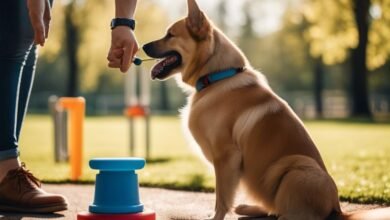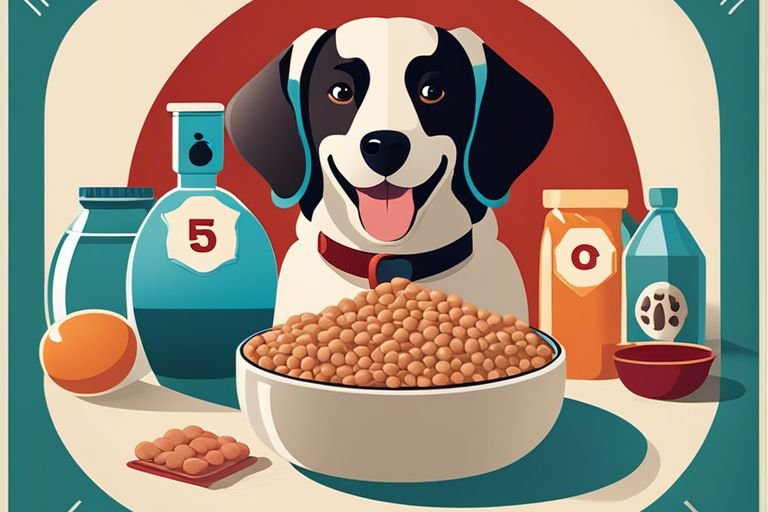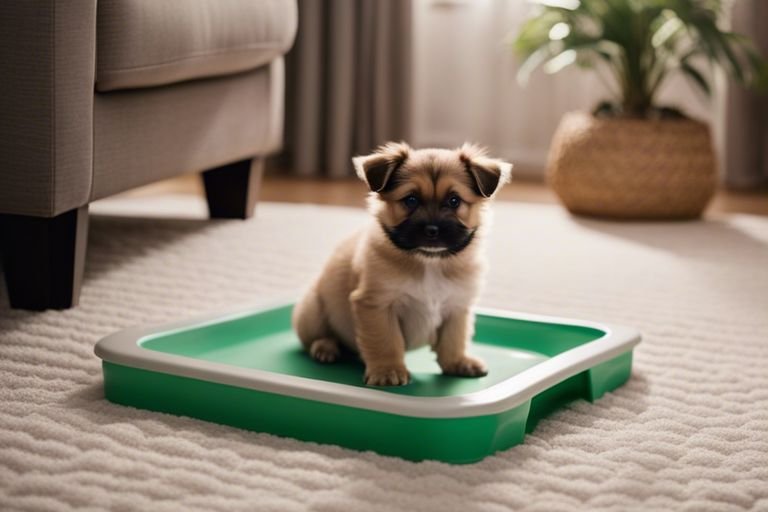Boost Your Bond – How-To Implement Dog Training Games For Better Connection
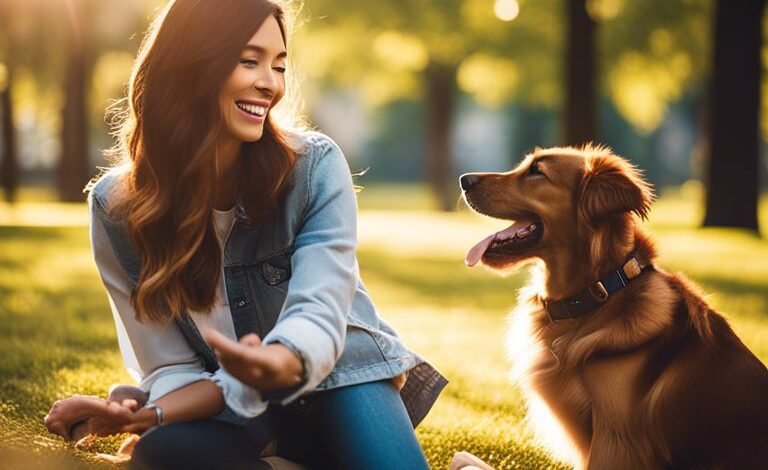
Just imagine the joy of deepening your bond with your furry friend through engaging and fun training games. In this how-to guide, you will discover creative and effective ways to strengthen your connection with your dog while making training sessions enjoyable for both of you. By incorporating these interactive activities into your routine, you can build trust, communication, and a lasting bond with your loyal companion.
Key Takeaways:
- Connection is key: Using dog training games can enhance the bond between you and your furry friend by encouraging positive interaction and building trust.
- Engagement is necessary: Incorporating fun and interactive games into your training routine can keep your dog engaged and motivated to learn.
- Consistency is crucial: Regularly practicing training games with your dog helps reinforce good behavior and strengthens the bond between you both.
- Rewards are important: Using treats and praise as rewards during training games can help reinforce positive behavior and create a positive association with learning.
- Personalized approach: Each dog is unique, so tailor your training games to suit your dog’s personality, preferences, and abilities for the best results.
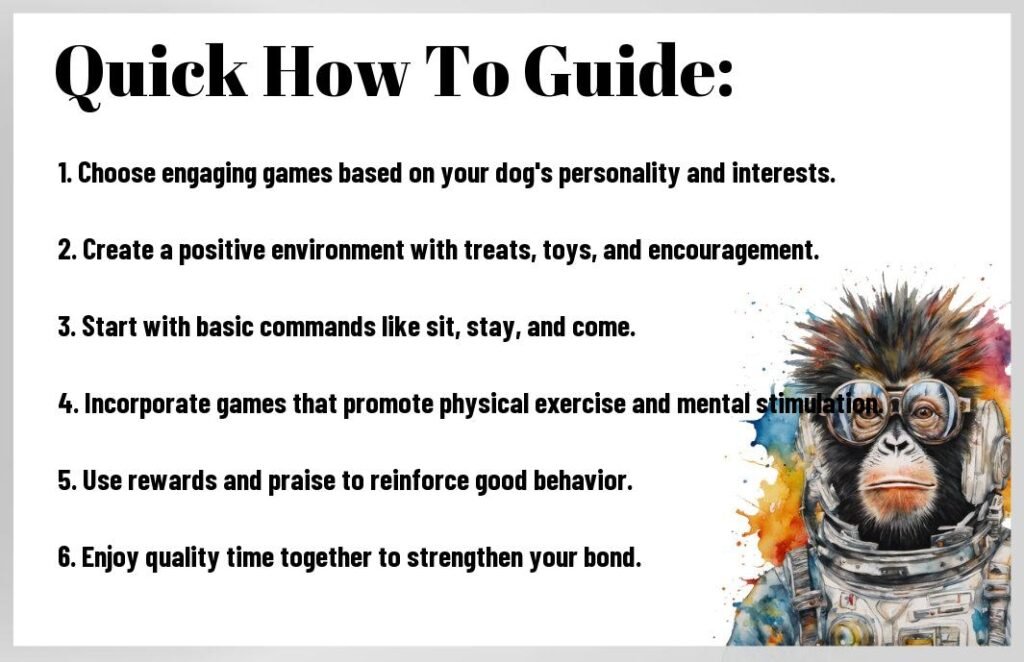
Understanding the Importance of Dog Training Games
Before delving into the specifics of dog training games, it’s vital to understand the significance they hold in enhancing the bond between you and your furry companion. Training games not only provide mental stimulation and physical exercise for your dog but also foster a stronger connection between the two of you. When you engage in these activities with your pet, you are not only teaching them new behaviors but also building trust and rapport.
Factors that Affect Dog-Human Bonding
- Consistency in training methods
- Positive reinforcement techniques
- Amount of time spent together
After establishing a foundation of trust and communication through these training games, you will notice a significant improvement in your overall relationship with your dog.
The Role of Play in Strengthening Relationships
Training your dog through play is an effective way to strengthen your bond and improve their behavior. Playing games with your dog not only provides them with mental stimulation but also reinforces your role as a leader and provider of fun. Plus, it’s a fantastic way to break up the monotony of traditional training sessions and keep your pup engaged and motivated. Any opportunity you have to incorporate play into your training routine is beneficial for strengthening your relationship with your dog. Whether it’s a game of fetch, hide and seek, or agility training, these activities help build mutual trust and respect between you and your furry friend.
Affect your bond with your dog in a positive way by incorporating training games into your routine. By engaging in these fun and interactive activities, you not only provide vital mental and physical stimulation for your pet but also deepen your bond and create lasting memories together.
Choosing the Right Dog Training Games
Any How to connect with my dog, online dog training session is incomplete without the addition of fun and interactive dog training games. These games not only help in building a strong bond with your furry friend but also make the learning process enjoyable for both of you. When choosing the right dog training games, there are a few factors to consider to ensure that they are suitable for your pup.
Tips for Selecting Age-Appropriate Games
- Consider your dog’s current age and stage of development.
- Choose games that are mentally stimulating but not too challenging for your dog’s comprehension level.
Assume that your young puppy may not have the attention span for complex games, while adult dogs may benefit from more intricate challenges. By selecting age-appropriate games, you can keep your dog engaged and motivated during training sessions.
Considering Your Dog's Breed, Size, and Energy Level
On selecting the right dog training games, it’s imperative to take into account your dog’s breed, size, and energy level. Certain games may be more suitable for specific breeds or sizes, while high-energy dogs may require more physically demanding activities to stay engaged. AgeAppropriate games like agility courses may be ideal for energetic breeds such as Border Collies, while smaller dogs may enjoy games that involve problem-solving or using their sense of smell. Tailoring the games to your dog’s specific characteristics can enhance the training experience and strengthen your bond.
Fun Games for Different Learning Styles
Training your dog effectively also involves considering their learning style. Just like humans, dogs have different ways of processing information and picking up new skills. Some dogs may be visual learners, while others may respond better to verbal cues or physical demonstrations. Right games tailored to your dog’s learning style can make training more efficient and enjoyable. For example, if your dog is a visual learner, games that involve watching and imitating behaviors may be beneficial. Understanding your dog’s learning preferences can help you choose games that resonate with them and improve the training outcome.
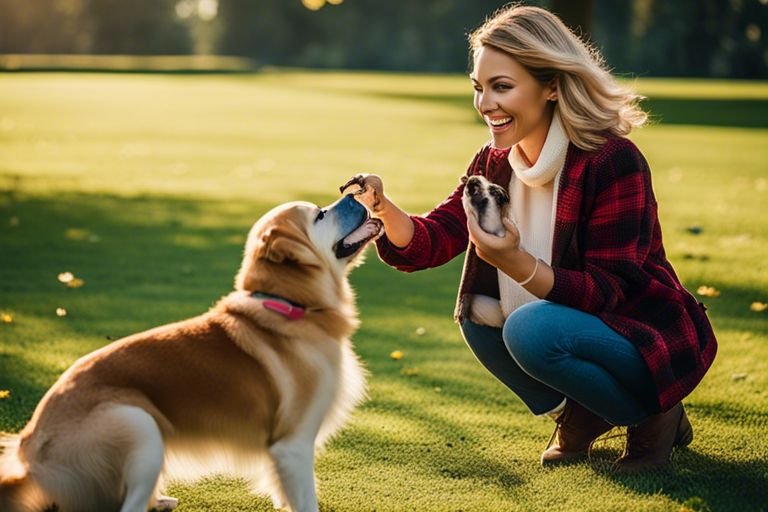
How to Get Started with Dog Training Games
Setting Up a Safe and Engaging Environment
To ensure successful dog training games, it’s crucial to create a safe and engaging environment for your furry friend. Remove any distractions that could hinder your training sessions, such as loud noises or other pets. Choose a quiet space where you can focus on interacting with your dog and where they feel comfortable and at ease.
Introducing New Games to Your Dog's Routine
With the variety of dog training games available, it’s vital to introduce new games gradually to your dog’s routine. Start with simple games that match your dog’s abilities and interests. As your dog becomes familiar with the games, you can gradually increase the difficulty level to keep them challenged and engaged.
It’s important to observe your dog’s responses and body language when introducing new games. Look for signs of excitement and enthusiasm, as these indicate that your dog is enjoying the activity. If your dog seems stressed or disinterested, consider trying a different game that better suits their preferences.
Establishing Clear Communication and Boundaries
The key to successful dog training games is establishing clear communication and boundaries with your furry companion. Use consistent cues and signals to guide your dog during the games, and reward them for following instructions. Setting clear boundaries helps your dog understand what is expected of them and fosters a deeper connection between you.
Establishing a positive and respectful relationship with your dog is vital for effective training. Avoid using punishment or harsh techniques, as these can damage the bond you share with your pet. Instead, focus on positive reinforcement and patience to build a strong and trusting relationship with your furry friend.
Building Trust and Focus with Dog Training Games
Games that Encourage Obedience and Attention
All successful relationships are built on trust, and this is no different when it comes to your bond with your furry friend. By engaging in training games that promote obedience and attention, you are not only teaching your dog important commands but also building a foundation of trust and understanding between the two of you. Games like hide and seek or follow the leader can help improve your dog’s focus and responsiveness to your commands.
How to Use Positive Reinforcement Techniques
Little by little, positive reinforcement can go a long way in reinforcing good behavior in your dog. When your pup obeys a command or performs a desired behavior during training games, reward them with treats, praise, or playtime. This positive feedback will not only motivate your dog to continue behaving well but also strengthen the bond you share.
Understanding that every dog is different is key to effectively using positive reinforcement techniques. Some dogs may respond well to treats, while others may prefer verbal praise or a favorite toy as a reward. Experiment with different rewards to see what motivates your furry friend the most and tailor your training games accordingly.
Overcoming Common Challenges and Distractions
Dog training games can provide a fun and engaging way to work through common challenges and distractions that may arise during obedience training. For example, if your dog gets easily distracted during outdoor training sessions, incorporating games like fetch or agility courses can help redirect their focus back to you.
Training with distractions present is a great way to teach your dog how to listen and respond to your commands in real-world situations. By gradually increasing the level of distractions in your training games, you can help your dog learn to stay focused on you despite tempting sights, sounds, and smells in their environment.
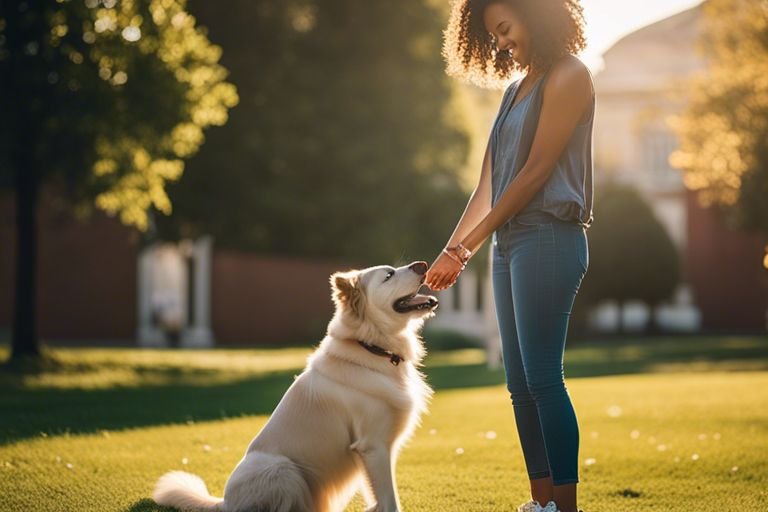
Advanced Dog Training Games for Deeper Bonding
Despite having mastered some basic training games with your dog, there are advanced games you can implement to further enhance your bond and connection. These games involve increased complexity and challenge to keep both you and your furry friend engaged and constantly learning.
- Strategies for Increasing Complexity and Challenge
Now you can introduce obstacles or distractions to test your dog’s ability to follow commands in various environments. Now you can incorporate more advanced commands such as directional cues or hand signals to expand your dog’s training repertoire. - Using Problem-Solving Games to Boost Confidence
To further deepen your bond with your dog, you can introduce problem-solving games that encourage your dog to think critically and independently.
Using Problem-Solving Games to Boost Confidence
To challenge your dog’s cognitive abilities and boost their confidence, consider introducing games that require them to solve puzzles or find hidden treats. These games not only provide mental stimulation but also help build your dog’s problem-solving skills and independence. The sense of accomplishment your dog feels when they successfully complete a challenging task will boost their confidence and strengthen the bond between the two of you.
Creating a Customized Game Plan for Your Dog
Game planning is an vital aspect of advanced training games. By customizing specific games based on your dog’s strengths, weaknesses, and interests, you can create a tailored approach that maximizes your training sessions and enhances the bond you share. Game planning allows you to focus on areas where your dog may need improvement while also incorporating their favorite activities to keep them motivated and engaged throughout the training process.
Creating a customized game plan for your dog will not only help them develop new skills and behaviors but also provide you with a roadmap for strengthening your bond and deepening your connection.
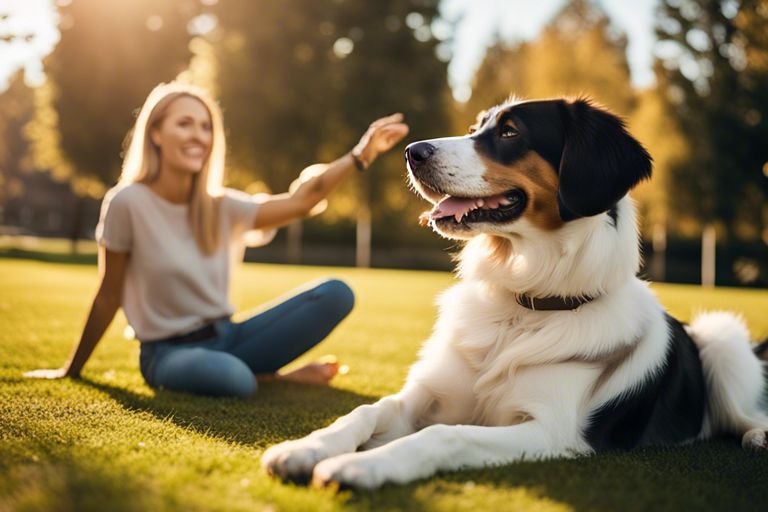
Tips for Maximizing the Effectiveness of Dog Training Games
Now, to ensure that you are getting the most out of the dog training games you are implementing with your furry friend, here are some tips to consider:
- Scheduling Regular Game Sessions for Optimal Results
- Involving the Whole Family for a Stronger Bond
- Adapting Games for Dogs with Special Needs
Scheduling Regular Game Sessions for Optimal Results
There’s no doubt that consistency is key when it comes to training your dog. By scheduling regular game sessions with your canine companion, you can reinforce positive behaviors and keep their minds engaged. Make sure to set aside dedicated time each day for these training games to see the best results. Any lapses in the routine may slow down progress, so stay committed to the schedule.
Involving the Whole Family for a Stronger Bond
Whole family involvement not only strengthens the bond between you and your dog but also ensures that everyone is on the same page when it comes to training methods and commands. By having different family members participate in the training games, your dog will learn to respond to a variety of people and become more adaptable in different situations. This shared experience can bring the family closer together and create a positive environment for your pet. Sessions involving the whole family can be a fun bonding activity that everyone can enjoy, while also providing consistent interactions with your dog that can lead to better results in their training progress.
Adapting Games for Dogs with Special Needs
Involving a dog with special needs in training games requires a bit of extra consideration and attention. It’s crucial to tailor the games to suit your dog’s abilities and comfort levels. Results will vary depending on the individual dog’s needs, so it’s crucial to be patient and observant throughout the process. By making the necessary adjustments and accommodations, you can still create a positive training experience that strengthens your bond with your furry friend.
Keep in mind, every dog is unique, and what works for one may not work for another. By staying attuned to your dog’s specific needs and abilities, you can adapt the training games to support their development and ensure a positive experience for both of you.
Summing up
With this in mind, implementing dog training games into your routine can greatly enhance the bond between you and your furry friend. These fun and interactive activities not only provide mental stimulation and physical exercise for your dog, but also create opportunities for positive reinforcement and communication. By incorporating these games into your training sessions, you can strengthen your connection with your dog and build a solid foundation of trust and obedience.
FAQ
Q: What are some benefits of playing training games with your dog?
A: Dog Training games not only help improve obedience and behavior but also strengthen the bond between you and your pet. These games provide mental stimulation, encourage physical activity, and foster communication and teamwork.
Q: How do I choose the right training games for my dog?
A: When selecting training games for your dog, consider your dog’s preferences, current abilities, and any behavior issues you may be addressing. It’s important to choose games that are engaging and fun for your dog while also being appropriate for their skill level.
Q: How often should I play training games with my dog?
A: It’s recommended to incorporate training games into your daily routine to maintain consistency and reinforce learning. Short, frequent sessions are more effective than long, infrequent ones, so aim for several short training sessions throughout the day.
Q: How often should I play training games with my dog?
A: Some popular training games include hide and seek, treat puzzles, agility courses, trick training, and scent games. Mix up the games to keep your dog engaged and challenged, and tailor them to address specific training goals or behavioral issues.
Q: What are some examples of training games I can play with my dog?
A: Dog Training games create opportunities for positive interactions, build trust, and enhance communication between you and your pet. By working together towards common goals, you strengthen your relationship and create a deeper connection based on mutual understanding and cooperation.

